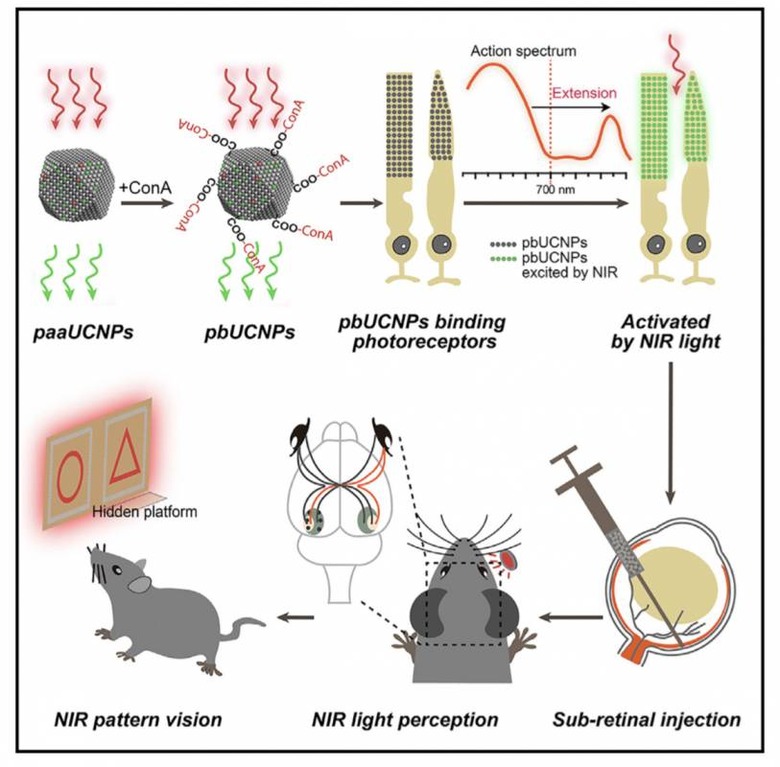Night Vision Eyedrops Open Door To Infrared Eyesight
Night vision eye-drops that could allow us to see normally invisible infrared light have been developed, with a team of researchers figuring out a way to give mammals superhero-style eyesight. The groundbreaking research initially focused on testing with mice, but the same principles should – in theory – work with all mammals.
Human vision covers only a relatively small portion of the electromagnetic spectrum. While our eyes can handle wavelengths roughly as low as 400 nanometers, and as high as around 700 nanometers, that still leaves whole swathes of spectrum that is lost to our sight.
The particular area of interest for a team of researchers at UMass Medical School and the University of Science and Technology of China has been infrared, and near-infrared light. That's the longer wavelength spectrum, above the limit where the human eye can see. Our eyes simply cannot recognize it.
That may well change in the future, though. The researchers came up with a nanoantennae solution, which when applied to the eyes allowed the test mice to see infrared light. The solution contains a "lectin protein conjugated nanoparticle" that is used to guide the nanoantennae to the right part of the mouse's retinal photoreceptor, and then fix them in place.
Rather than change the photoreceptor, the tiny antennae modify the near-infrared (NIR) light, instead. It's converted into visible green light, which is then observed by the retina. That data is interpreted by the brain as visible light.

There are some other important factors at play. For a start, the droplets don't apparently impair the mouse's ability to see regular light as normal. The enhancement is temporary, too, and the ability to recognize NIR will eventually fade. That happened approximately two weeks after application, with the mice having no observable effects to their health or vision.
"We believe that this research is a major advance in the field of biotechnology," Gang Han, PhD, associate professor of biochemistry & molecular pharmacology, said of the project. "This concept-provoking study should pave the way to numerous critical applications via the unique creation of mammalian NIR visual ability and have high translational potential."
The findings have been reported in a new paper in Cell. A number of tests on the mice showed that they also obtained NIR Pattern vision, and could differentiate between triangles, circles, and other relatively complex shapes. "Treated mice were able to perceive these light patterns even in daylight conditions," the researchers point out, "indicating that the nanoparticles were working in parallel with conventional vision."
Obviously we're still some way off a bottle of eyedrops you could pick up at CVS and drip into your eyes for instant night vision. Still, there are wide-ranging hopes for the implications of the research. The nanoantennae could help scientists figure out how the brain understands visual signals, for example, or lead to new treatments for color blindness.
IMAGE BPCA (CC BY 2.0); edited
